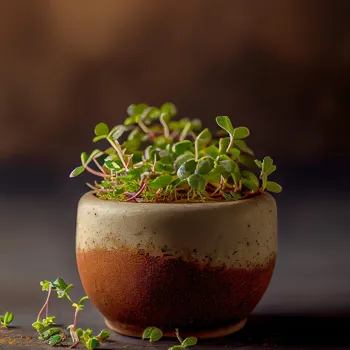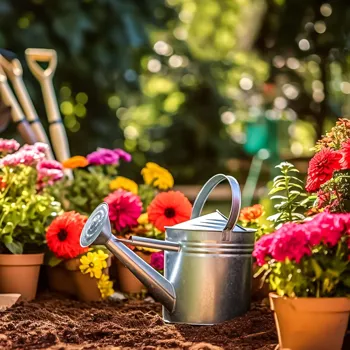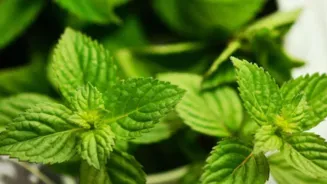Discover how to cultivate your own Indian spice garden at home! Learn step-by-step tips for growing fresh ingredients
Namaste, fellow gardening enthusiasts! Imagine stepping into your backyard and plucking
fresh, fragrant spices to add magic to your culinary creations. No longer will you have to rely solely on store-bought, sometimes stale, spice powders.
Creating your own Indian spice garden is not only a rewarding hobby but also a sustainable way to enhance your cooking with authentic flavors. Whether you have a sprawling lawn or a small balcony, growing your own spices is easier than you think.
This guide will provide you with step-by-step instructions and essential tips to cultivate a thriving Indian spice garden right at your home. Get ready to embark on a flavourful journey!
Plan and plant Indian spices suited for your space and climate
Before you even get your hands dirty, proper planning is crucial. First, assess the space you have available. Even a small balcony can accommodate several potted spice plants. Next, consider the climate in your region.
Most Indian spices thrive in warm, humid conditions, but some varieties are more tolerant of cooler temperatures. Research the specific needs of the spices you want to grow. For instance, turmeric and ginger prefer partial shade, while chili peppers need plenty of sunlight.
Once you understand your space and climate, you can create a list of spices that are well-suited for your garden. Popular choices include: coriander, curry leaves, ginger, turmeric, mint, chili peppers, fenugreek, and cardamom if your climate allows.
Ensure that you have access to clean water for irrigation, and consider the proximity of your garden to your kitchen for convenient harvesting.
Selecting the right soil is essential for healthy spice plants
Selecting the right soil is essential for healthy spice plants. Indian spices generally prefer well-drained soil that is rich in organic matter. You can either purchase pre-mixed potting soil or create your own mix by combining garden soil, compost, and sand or coco peat.

The ideal pH level for most spices is between 6.0 and 7.0, which is slightly acidic to neutral. Before planting, it's a good idea to test your soil to determine its pH and nutrient content. You can buy a soil testing kit at most garden centers.
If your soil is too acidic, you can amend it with lime. If it's too alkaline, you can add sulfur or organic matter like compost. Remember to loosen the soil and remove any rocks or debris before planting.
Well-prepared soil will provide your spice plants with the nutrients they need to grow strong and flavorful. You can also use raised beds or large containers to grow your spices, providing better drainage and control over the soil composition.
Starting a spice garden with seeds, seedlings, or rhizomes
Starting your spice garden can be done in a few ways: seeds, seedlings, or rhizomes. Seeds are a cost-effective way to grow many spices, such as coriander, fenugreek, and mustard.
You can start seeds indoors in seed trays or directly sow them in your garden bed, depending on the spice and the time of year. Seedlings are young plants that have already been started in a nursery.
They offer a head start and are a good option for spices like chili peppers, curry leaves, and mint. Rhizomes, like ginger and turmeric, are underground stems that can be planted directly in the soil. When planting seeds, follow the instructions on the seed packet for spacing and depth.
When transplanting seedlings, gently remove them from their containers and plant them at the same depth they were growing in. When planting rhizomes, make sure the "eyes" or buds are facing upwards.
Consider using organic fertilizers or compost to enrich the soil and give your plants a healthy start.
Maintain spice garden by watering properly, avoiding overwatering
Watering is a vital aspect of spice garden maintenance. Most Indian spices need consistent moisture, but it's important to avoid overwatering, which can lead to root rot. Check the moisture level of the soil regularly by sticking your finger about an inch deep.

If the soil feels dry, it's time to water. Water deeply and thoroughly, allowing the water to reach the roots. Avoid watering the leaves, as this can promote fungal diseases. The best time to water is early in the morning or late in the evening, when the sun is not too strong.
During the monsoon season, you may need to adjust your watering schedule to avoid waterlogging. Consider using a drip irrigation system or soaker hoses to deliver water directly to the roots. Mulching around your plants can also help retain moisture and suppress weeds.
Maintain spice garden by weeding, pest control, pruning & harvesting
Like any garden, your spice garden will require ongoing care to thrive. Weeds can compete with your spice plants for nutrients and water, so it's important to remove them regularly. You can hand-pull weeds or use a hoe. Mulching can also help suppress weed growth.
Pests and diseases can also affect your spice plants. Keep an eye out for common pests like aphids, spider mites, and whiteflies. You can control pests with organic insecticides like neem oil or insecticidal soap.
To prevent fungal diseases, make sure your plants have good air circulation and avoid overwatering. Regularly inspect your plants for signs of disease, such as spots, wilting, or yellowing leaves. Pruning your spice plants can also help promote healthy growth and increase yields.
Remove any dead or damaged leaves and stems. Harvest your spices regularly to encourage new growth.
Harvesting spices at the right time for best flavor
Harvesting your spices at the right time is crucial for optimal flavor and aroma. The timing of harvest will vary depending on the spice. Coriander leaves can be harvested when they are young and tender. Coriander seeds are ready to harvest when they turn brown and dry.
Curry leaves can be harvested as needed. Ginger and turmeric are typically harvested after the plant has flowered and the leaves have started to die back. Chili peppers can be harvested when they turn their mature color, such as red or green.
Mint can be harvested regularly throughout the growing season. Fenugreek leaves can be harvested when they are young and tender. Cardamom pods are harvested when they turn slightly yellow. Once you have harvested your spices, you can use them fresh or dry them for later use.
To dry spices, spread them out on a tray in a cool, dry place. Store dried spices in airtight containers in a dark, cool place to preserve their flavor and aroma. Enjoy the fruits (or spices!) of your labor!
AI Generated Content. Glance/InMobi shall have no liability for the content











